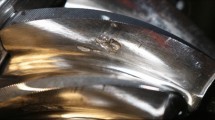Abstract
The friction drive elevators the influence of the braking distance has very high significance to meet certain safety regulations and comfort. During the emergency braking the delay for the system a frame and a cabin should be within the range from 0.2 to 9.81 m/s2. However, there are no specialist literatures regarding the issues connected with emergency braking of elevating devices either. The results of the own empirical research work are presented regarding the influence of design changes on the working parameters of the friction drive elevator gears. ASG100, KB160, PP16, PR2000UD and CHP2000 types of safety progressive gears are analyzed. ASG100, KB160, PP16, PR2000UD type progressive gears are already produced by European manufacturers. CHP2000 type gears are established as the alternative option for the already existing solutions. The unique cam system has been used in the CHP 2000 gears. The cam leverage gives the chance to unblock, in a very easy way, the clamed gears after braking. Thus, it is a key aspect to perform laboratory tests over the braking process of a newly created solution. The proper value of the braking distance has a significant influence on the value of delay in terms of binding standards. The influence of loading on the effective braking distance and the value of the falling elevator cabin speed are analyzed and the results are presented. The results presented are interesting from lift devices operation and a new model of CHP 2000 progressive gear point of view.
Similar content being viewed by others
References
European Standards 81. 1. Safety regulations concerning lift structure and installation[S]. Part 1. Electric lifts, 2012.
FILAS J, MUDRO M. The dynamic equation of motion of driving mechanism of a freight elevator[J]. Procedia Engineering, 2012: 48.
FENG Yonghui, ZHANG Jianwu. Hydraulics active guide roller system for high-speed elevator based on fuzzy controller[J]. Chinese Journal of Mechanical Engineering, 2007, 20(5): 68–73.
GARDYNSKI L, LONKWIC P. Testing polymer rollers memory in the context of passenger lift car comfort[J]. Journal of Vibroengineering, 2014, 16: 1392–8716.
KAYAOGLU E, SALMAN O, CANDAS A. Study on stress and deformation of an elevator safety gear brake block using experimental and FEA methods[J]. Advanced Materials Research, 2011, 308-301: 1513–1518.
KACZMARCZYK S. The nonstationary, nonlinear dynamic interactions in slender continua deployed in high-rise vertical transportation systems in the modern built environment[C]//Journal of Physics, Glasgow, Great Britain, August 28–31, 2012, 382: 1–6.
LONKWIC P. Using disk spring solver application for prototyping disk spring in passenger lift catchers[J]. Applied Computer Science, 2014, 10: 2353–6977.
LONKWIC P, SZYDLO K. Selected parameters of the work of speed limiter line straining system in a frictional lift[J]. Advances in Science and Technology, 2014, 21: 1662–0356.
LONKWIC P. Wear and tear of the friction drive elevator wheel with the use of an acoustic signal[D]. Technical University of Lublin, 2009.
TAPLAK H, ERKAYA S, YILDIRIM S, et al. The use of neural network predictors for analyzing the elevator vibrations[J]. Mechanical Engineering, 2014, 39: 1157–1170.
ZHU W D, XU G Y. Vibration of elevator cables with small bending stiffness [J]. Journal of Sound and Vibration, 2003, 263: 679–699.
ZHU Weidong, REN H. A linear model of stationery elevator travelling and compensation cables[J]. Journal of Sound and Vibration, 2013, 332: 3086–3097.
XU Bing, CHENG Min, YANG Huayong, et al. Safety brake performance evaluation and optimization of hydraulic lifting systems in case of overspeed dropping[J]. Mechatronics, 2013, 23: 1180–1190.
YU Bolin. A surface composite coating elevator safety gear wedge[C]//2nd Global Conference on Civil, Structural and Environmental Engineering, Shenzhen China, September 28–29, 2014: 148–151.
ZHANG Ziyi, TAN Miaomiao, TIAN Hongyu. Research on a new type of elevator safety catch[C]//2nd International Conference on Civil Engineering, Architecture and Building Materials, Yantai China, May 25–27, 2012: 2837–2840.
EREN K, OZLEM S, ADEM C. Study on stress and deformation of an elevator safety gear brake block using experimental and FEA methods[C]//International Conference on Advanced Design and Manufacturing Engineering, Guangzhou, China, September 16–18, 2011: 1513–1518.
HAO Xiaojun. The research of Auto detecting the brake for construction elevator[C]//3rd International Conference on Computer-Aided Design, Manufacturing, Modeling and Simulation, Chongqing China, September 21–23, 2014: 308–311.
MIYUKI Hirose, KOBAYASHI Takehiko. Analyses and modeling of ultra-wideband on-body propagation channels depending on population density within an elevator cabin[J]. Transactions on Fundamental of Electronics Communications and Computer Sciences 2014, E97A: 94–100.
ZHENG Xiangpan, CHEN Shumei. Analysis and design of MRF elevator traction transmission device[C]//2nd International Conference on Machine Design and Manufacturing Engineering, Jeju Island, South Korea, May 01–02, 2013: 395–400.
LI Jianmin, SUN Chuanyang, YANG Zhangcheng. Multi-body dynamics simulation and finite element analysis of the car’s sub-frame[C]//2nd International Conference on Civil Engineering and Transportation, Guilin, China, October 27–28, 2012: 2107–2112.
WANG Feng, ZHANG Jinguahg, LIANG Xuedong. Elevator safety risk and countermeasures based on FTA-TFN[J]. Applied Mathematics & Information Sciences, 2014, 8(4): 1741–1748.
FAN Shengli. Study on the evaluation and operation efficiency of elevator service quality based on MATLAB[C]//International Conference of the Economic-Management-and-Trade-Cooperation, Xian, China, April 12–13, 2014: 141–145.
MOON Kwak. Vibration of elevator rope with a spring-mass system at the Tip[J]. Transactions of the Korean Society for Noise and Vibration Engineering, 2014, 4(24): 317–323.
Author information
Authors and Affiliations
Corresponding author
Additional information
LONKWIC Poul, born in 1974, is currently a PhD senior lecturer at The State School of Higher Education, Chełm Poland, and the head of Technical and Production Department, LWDO Lift Service S.A., Lublin, Poland. He received his PhD degree at Technical University of Lublin in 2009. His research interests include elevators, safety gears and vibroisolation process.
Rights and permissions
About this article
Cite this article
Lonkwic, P. Influence of friction drive lift gears construction on the length of braking distance. Chin. J. Mech. Eng. 28, 363–368 (2015). https://doi.org/10.3901/CJME.2015.0108.009
Received:
Revised:
Accepted:
Published:
Issue Date:
DOI: https://doi.org/10.3901/CJME.2015.0108.009




